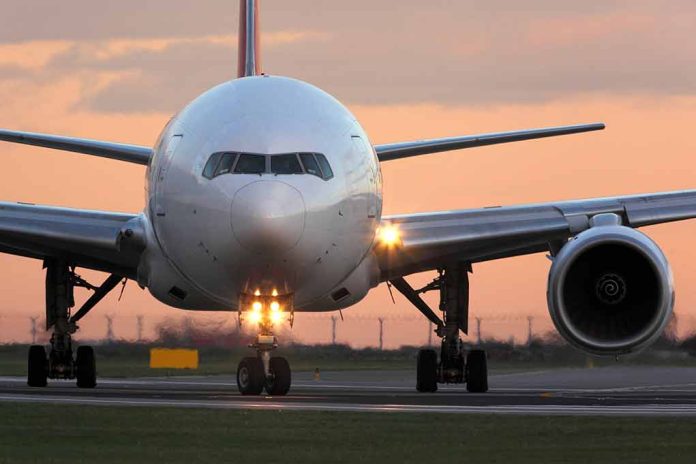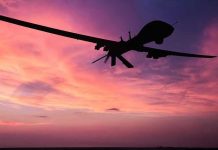
Captain Rebecca Lobach failed to follow a critical turn instruction before her Black Hawk helicopter collided with an American Airlines plane near Reagan National Airport, resulting in the deadliest U.S. aviation disaster since 2001 that killed 67 people.
Key Takeaways
- The Black Hawk pilot ignored instructions from her co-pilot to change course, leading to a fatal collision with American Airlines Flight 5342.
- Multiple safety systems failed simultaneously, including turned-off tracking technology and ineffective visual separation procedures.
- Air traffic control issues, radio communication problems, and night-vision limitations all contributed to the disaster.
- The FAA has permanently closed the helicopter route involved in the crash and now requires all aircraft in the area to keep tracking systems active.
- The catastrophic incident has prompted significant safety protocol revisions for both military and civilian aviation operations.
Critical Failures in Communication and Protocol
On January 29, a U.S. Army Black Hawk helicopter collided with American Airlines Flight 5342 near Reagan National Airport in Washington DC, killing all 64 passengers on the plane and three crew members on the helicopter. The investigation has revealed that Captain Rebecca M. Lobach, who was being evaluated at the time, failed to follow instructions from her flight instructor, Chief Warrant Officer 2 Andrew Loyd Eaves, to execute a critical turn that would have avoided the collision. This disaster marks the worst aviation accident in the United States since 2001.
The Black Hawk crew had requested to fly by “visual separation,” a standard but potentially risky procedure that requires pilots to maintain safe distance from other aircraft by sight. Despite being alerted by air traffic control about the passenger jet’s presence, the helicopter crew failed to execute proper visual separation. Adding to the danger, the helicopter’s ADS-B Out system—which broadcasts real-time position data to other aircraft and controllers—was deliberately switched off to comply with Army protocols for confidential operations.
The @nytimes story on the January DC plane crash hides its takeaway until the last sentences: the lady helicopter pilot ignored multiple warnings from her right seat about altitude (and his directly telling her to turn away) and flew straight into a passenger jet.
The end. Ugh. pic.twitter.com/7emtYkZTwQ
— Alex Berenson (@AlexBerenson) April 27, 2025
Multiple Systems Failures Revealed
The investigation has uncovered a complex scenario where multiple safety systems simultaneously failed. The pilots were using night-vision goggles, which can be compromised by bright urban lights, and radio communications were “stepped on,” potentially causing critical instructions to go unheard. Air traffic controllers granted visual separation with the simple phrase “Visual separation approved,” but failed to provide sufficient information about the jet’s location and flight path, and did not deliver emergency instructions despite tracking the developing situation.
“Multiple layers of safety precautions failed that night,” said FAA deputy administrator Katie Thomson, highlighting the cascading breakdowns that led to the tragedy.
The National Transportation Safety Board investigation has also revealed a history of close calls between helicopters and commercial planes at Reagan National Airport, with many incidents involving military helicopters flying above permitted altitudes. The Black Hawk was operating in particularly congested airspace near the airport, with only 75 feet of separation from aircraft approaching runway 33—a razor-thin margin that left no room for error.
Immediate Safety Changes Implemented
In response to the disaster, both the Federal Aviation Administration and the U.S. Army have implemented significant changes to prevent similar tragedies. The FAA has permanently closed the route along the Potomac River that intersected the flight path where the collision occurred and restricted nonessential helicopter operations at Reagan National Airport. Most critically, the FAA now requires all aircraft in the airport’s airspace to have ADS-B Out tracking systems turned on without exception.
“I think what we’ll find in the end is there were multiple things that, had any one of them changed, it could have well changed the outcome of that evening,” stated Brigadier General Matthew Braman, acknowledging the multilayered nature of the disaster.
The Army has issued new guidance increasing the risk assessment level for operations with tracking systems disabled. Meanwhile, the NTSB continues its investigation, with a final report expected in early 2026. The catastrophic failure of multiple redundant safety systems has prompted aviation experts to reexamine fundamental assumptions about aviation safety protocols and the potential dangers of routine procedures that may have become dangerously normalized.









